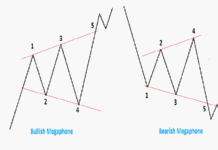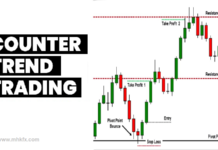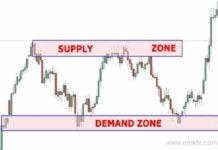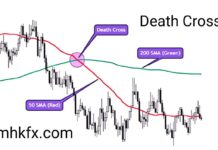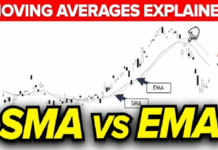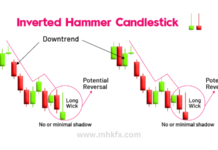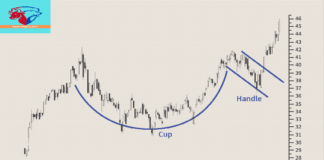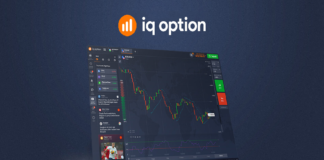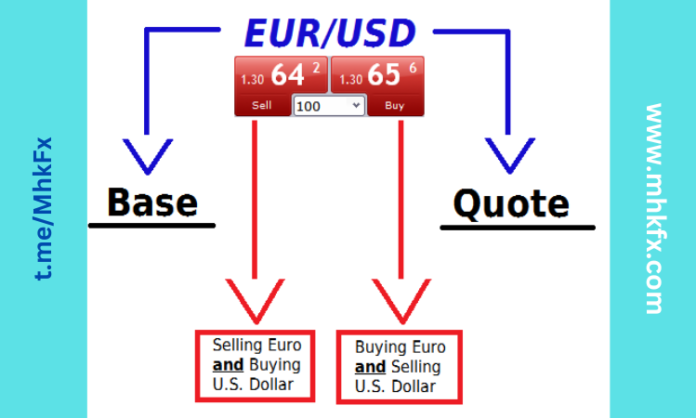
Currency pair trading, also known as forex trading, has become increasingly popular among investors seeking to capitalize on the fluctuations in global currency markets. This dynamic market offers a plethora of opportunities for those who can navigate its complexities with skill and precision. In this article, we will delve into the insights and strategies shared by expert traders in the currency pair trading arena, providing valuable guidance for both aspiring and experienced traders.
Understanding the Basics of Currency Pair Trading :
Currency pair trading, also known as forex trading or foreign exchange trading, involves the simultaneous buying and selling of different currencies in the foreign exchange market. As one of the largest financial markets globally, the forex market facilitates the exchange of currencies between various countries, making it an essential component of international trade and finance.
Definition and Purpose of Currency Pair Trading:
Currency pair trading involves trading one currency against another, and the value of a currency pair is determined by the exchange rate between the two currencies.
The purpose of currency pair trading is to profit from the fluctuations in exchange rates. Traders aim to buy a currency pair at a lower price and sell it at a higher price, thereby making a profit.
Major Currency Pairs and Their Significance in the Market:
Major currency pairs are the most frequently traded pairs in the forex market and involve the world’s most prominent currencies, such as the U.S. Dollar (USD), Euro (EUR), Japanese Yen (JPY), British Pound Sterling (GBP), Swiss Franc (CHF), Canadian Dollar (CAD), Australian Dollar (AUD), and New Zealand Dollar (NZD).
Major currency pairs offer high liquidity, tight spreads, and generally have lower transaction costs compared to exotic currency pairs.
Factors Influencing Currency Pair Movements:
Currency pair movements are influenced by a myriad of factors, including:
Economic Indicators: Key economic data such as GDP growth, inflation, employment figures, and trade balances can significantly impact currency values.
Central Bank Policies: Decisions on interest rates, monetary policy, and quantitative easing by central banks can have a profound effect on currency pairs.
Political Stability and Geopolitical Events: Political uncertainties and geopolitical tensions in different countries can cause fluctuations in their respective currencies.
Market Sentiment: Traders’ perceptions and emotions about the market can influence demand and supply for currencies.
Market Speculation: Currency pairs can be influenced by speculators seeking to profit from short-term price movements.
Technical Analysis Techniques :
Technical analysis is a critical tool used by currency pair traders to analyze historical price data and identify potential future price movements. By studying chart patterns, trends, and various technical indicators, traders aim to make informed decisions and gain a competitive edge in the forex market. Let’s explore some essential technical analysis techniques used in currency pair trading:
Identifying Trends and Trendlines:
Trends are the general direction in which a currency pair’s price is moving over time. They can be classified as uptrends (rising prices), downtrends (falling prices), or sideways trends (consolidation).
Trendlines are drawn on a price chart to visually represent the direction of the trend. In an uptrend, the trendline is drawn by connecting higher swing lows, while in a downtrend, it connects lower swing highs.
Using Moving Averages and Exponential Moving Averages (EMAs):
Moving averages (MAs) are mathematical calculations that smooth out price data and create a trend-following indicator.
Traders commonly use the 50-day and 200-day moving averages to identify long-term trends. Crossovers between short-term (e.g., 20-day) and long-term moving averages can signal potential trend reversals.
Exponential Moving Averages (EMAs) assign greater weight to recent price data, making them more responsive to current market conditions.
Utilizing Relative Strength Index (RSI) and Other Oscillators:
The Relative Strength Index (RSI) is a momentum oscillator that measures the speed and change of price movements. It ranges from 0 to 100 and indicates overbought conditions (above 70) and oversold conditions (below 30).
Other oscillators, such as the Moving Average Convergence Divergence (MACD) and the Stochastic Oscillator, are used to identify potential entry and exit points based on price momentum and divergence.
Fibonacci Retracement and Extension Levels:
Fibonacci retracement levels are horizontal lines drawn on a price chart to identify potential support and resistance levels based on the Fibonacci sequence (e.g., 38.2%, 50%, 61.8%).
Fibonacci extension levels are used to project potential price targets beyond the previous price swing, helping traders set profit targets.
Fundamental Analysis Strategies on Currency Pair :
Fundamental analysis is a crucial approach used by currency pair traders to evaluate the intrinsic value of currencies based on various economic, financial, and geopolitical factors. By analyzing fundamental data, traders aim to identify the underlying forces that drive currency pair movements and make informed trading decisions. Here are some fundamental analysis strategies commonly used in currency pair trading:
Analyzing Economic Indicators and Their Impact on Currency Pairs:
Gross Domestic Product (GDP): GDP measures the economic performance of a country and is a vital indicator of its overall economic health. Higher GDP growth often leads to currency appreciation.
Inflation Rate: The rate at which the general price level of goods and services rises affects a currency’s purchasing power. Lower inflation rates tend to be positive for a currency’s value.
Interest Rates: Central banks set interest rates, and changes in rates influence currency valuations. Higher interest rates typically attract foreign investors seeking better returns, leading to currency appreciation.
Employment Data: Metrics like unemployment rates and non-farm payrolls impact a country’s economic outlook and can influence currency pair movements.
Monitoring Central Bank Policies and Interest Rates:
Central banks play a pivotal role in currency pair movements. Traders closely monitor monetary policy decisions, statements, and press conferences from central bank officials.
Central bank interest rate decisions have a significant impact on a currency’s value. Higher interest rates can attract foreign investments, leading to currency appreciation, while lower rates may have the opposite effect.
Examining Geopolitical Events and Their Implications on Forex Markets:
Geopolitical events, such as elections, trade agreements, and conflicts, can create uncertainty in the forex market. Political stability and economic policy continuity are crucial factors that can affect investor confidence and impact a currency’s value.
Understanding Trade Balances and Current Account Deficits/Surpluses:
A country’s trade balance, representing the difference between its exports and imports, can influence its currency’s strength.
A trade surplus (more exports than imports) can lead to a stronger currency, while a trade deficit (more imports than exports) may weaken a currency.
Risk Management Approaches on Currency Pair :
In currency pair trading, managing risk is crucial to safeguarding capital and ensuring long-term success. While potential profits can be enticing, the forex market’s inherent volatility can lead to substantial losses if risk is not adequately managed. Implementing effective risk management approaches can help traders mitigate downside exposure and protect their trading accounts. Here are some essential risk management strategies for currency pair trading:
Setting Appropriate Stop-Loss and Take-Profit Levels:
- A stop-loss is an order placed with a broker to exit a trade if the currency pair’s price moves against the trader beyond a certain level. It serves as a predefined limit to prevent excessive losses.
- A take-profit order is an instruction to close a trade when the currency pair’s price reaches a specified profit target. It ensures that profits are realized before the market reverses.
Calculating Position Sizes Based on Risk Tolerance:
Position sizing involves determining the number of lots or units to trade based on a trader’s risk tolerance and the size of their trading account.
Using a percentage-based approach (e.g., risking 1-2% of the account balance per trade) helps ensure that individual trades’ losses are limited, preserving capital for future opportunities.
Diversification to Minimize Exposure to Individual Currency Pairs:
Diversification involves spreading investments across multiple currency pairs rather than concentrating on a single pair.
By diversifying, traders reduce the impact of adverse movements in any single currency pair and protect their capital from excessive risk.
Avoiding Overtrading and Emotional Decision-Making:
Overtrading, driven by emotions or impatience, can lead to increased risk exposure and hasty, ill-informed decisions.
Sticking to a well-defined trading plan and avoiding impulsive trades are essential components of effective risk management.
Monitoring Leverage and Margin Requirements:
Leverage amplifies both potential gains and losses in currency pair trading. High leverage can lead to significant profits but also increases risk.
Traders should carefully assess their leverage settings and avoid overleveraging, which could result in a margin call or wipe out their trading account.
Regularly Reviewing and Adjusting Risk Management Strategies:
The forex market is dynamic, and risk management strategies should adapt to changing market conditions.
Traders should periodically review their risk management practices, learn from past trades, and adjust their approach accordingly.
Case Studies : Real-Life Trading Scenarios in Currency Pair
In this section, we will explore three real-life currency pair trading scenarios that illustrate various trading strategies and decision-making processes. These case studies highlight the importance of technical and fundamental analysis, risk management, and emotional discipline in achieving success in currency pair trading.
Case Study 1: Riding the Trend
Scenario: Trader A identifies a strong uptrend in the EUR/USD currency pair based on technical analysis. The pair has been consistently making higher highs and higher lows, indicating a bullish trend.
Strategy:
Trader A decides to employ a trend-following strategy and enter a long position in EUR/USD to ride the upward momentum.
They set a stop-loss just below the recent swing low to protect against potential reversals and limit potential losses.
For the take-profit level, Trader A targets a key resistance level that aligns with a favorable risk-reward ratio.
Outcome:
The trade follows the upward trend as expected, and the EUR/USD pair reaches the take-profit level, resulting in a profitable trade.
Trader A’s risk management approach ensured a controlled loss if the trade went against them, and their patience in holding the position paid off as they captured substantial gains from the trend.
Case Study 2: Managing Risk During High Volatility
Scenario: Trader B anticipates increased market volatility due to a major economic announcement, such as a central bank interest rate decision.
Strategy:
Trader B decides to refrain from opening new positions ahead of the event due to heightened uncertainty.
Instead, they choose to closely monitor the currency pairs they are trading and implement trailing stop-loss orders to protect their profits in case of sharp market movements.
Outcome:
The economic announcement triggers significant volatility in the forex market, resulting in erratic price movements.
The trailing stop-loss orders effectively lock in profits for Trader B’s open positions, allowing them to protect their gains despite the market turbulence.
Case Study 3: Avoiding Overtrading and Emotional Bias
Scenario: Trader C experiences a series of losses over a few trading sessions and becomes emotionally affected by the negative outcomes.
Strategy:
To regain confidence and focus, Trader C takes a break from trading to analyze their previous trades and identify any mistakes.
They revisit their trading plan and journal to gain a clear perspective on their strengths and weaknesses.
Trader C decides to avoid overtrading and focus on only high-probability setups that align with their trading plan.
Outcome:
After taking a break and reevaluating their trading approach, Trader C re-enters the market with a more disciplined and patient mindset.
By focusing on quality trades and adhering to their trading plan, Trader C experiences improved trading performance and gradually recovers from the previous losses.
Conclusion :
Currency pair trading presents an exciting and potentially lucrative opportunity for traders worldwide. By assimilating the insights and strategies shared by expert traders, aspiring forex traders can enhance their skills and understanding of this dynamic market. Embracing a holistic approach, encompassing technical, fundamental, and sentiment analysis, along with risk management and psychological discipline, is key to achieving success in the currency pair trading arena. Remember that success in trading requires continuous learning, practice, and the ability to adapt to ever-changing market conditions.
Click to sign up with MonetaMarkets
Read more:
Trendline Trading : A Powerful Tool for Riding Market Trends
Get the answers to all your Forex questions in one place : All About Forex Query and Answer
Trading Beyond Market Price : Understanding the Fair Value Gap (FVG)

